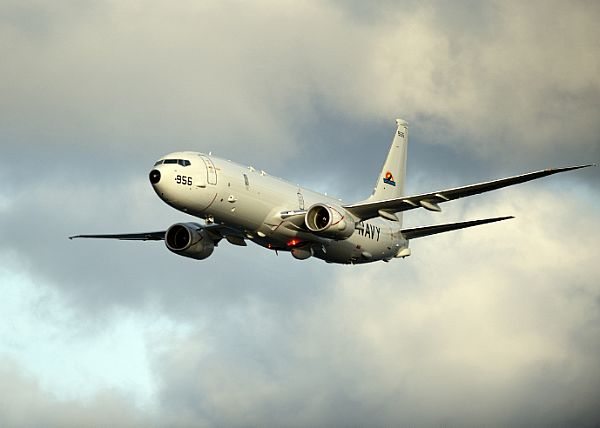By Rear Adm. Sean Buck, Commander, Patrol and Reconnaissance Group
When I first started this journey, there were 24 active-duty operational squadrons and more than 240 P-3s in the fleet. Today, the force consists of 12 active-duty patrol squadrons with fewer than 85 of 132 P-3s available on flight lines in the fleet. Last year, the Orion celebrated its 50th anniversary. To date, the average P-3 in the fleet today has logged more than 17,000 flight hours – one aircraft, No. 158919, aka “nine-inch nails” flying more than 26,000 hours. These numbers significantly exceed the original design life of the aircraft, and substantial structural repairs to the wings have been required over the years to achieve this longevity.
Despite the success of these wing repairs, remaining P-3s continue to age. We are living on borrowed time with our P-3s.
Five years ago, in the midst of managing fatigue-life issues with our P-3 fleet, we developed a plan to transition the fleet to the P-8A Poseidon beginning in spring 2012. I’m pleased to report today that P-8 transition is well underway at Naval Air Station Jacksonville, Fla., in accordance with the plan we laid out.
With the hard work and support of our fleet, the Naval Air Systems Command, Office of the Chief of Naval Operations and industry team, the Navy accepted the first six low-rate, initial-production P-8s on or ahead of schedule, with the last LRIP Lot 1 aircraft delivered on Jan. 31. Furthermore, Boeing is on contract to deliver seven additional LRIP Lot II aircraft over the next year.
Our Fleet Replacement Squadron, VP-30, commenced “training the trainers” in April 2012, and our first fleet squadron, Patrol Squadron 16 (VP-16), began P-8 Fleet Introduction Training in July 2012 after returning from a deployment. VP-16 aircrews and maintenance personnel successfully completed P-8 transition on schedule and the squadron was certified “Safe-for-Flight” to operate P-8s from its home port last month. The squadron is training to build advanced combat readiness in its P-8s in preparation for deploying to the Western Pacific with six P-8s in December.
I was part of the “War Eagles” of VP-16′s ceremony commemorating the completion of its transition from the P-3C Orion, making history as the first operational squadron to fly the P-8A Poseidon. With custody of two new jets, VP-16 will receive four more P-8s between now and their next deployment.
The second fleet squadron, VP-5, has commenced P-8 transition at NAS Jacksonville, and the third squadron, VP-45, will commence transition this summer after returning from a deployment to the Western Pacific.
To date, we have executed more than 6,600 flight hours in the P-8 program during developmental and operational testing at NAS Patuxent River, Md., and fleet introduction at NAS Jacksonville. Out of the gate, the aircraft has proven to be a reliable and capable platform.
Over the past year, we’ve had the opportunity to fly the aircraft in a wide variety of operational environments and mission scenarios, and by all accounts, it is performing well. We’ve executed detachments from Australia, Hawaii, Guam, Japan, Alaska and Scotland, successfully employing the aircraft against difficult U.S. and allied nuclear and diesel submarines. Many of these events were conducted in support of the P-8’s initial operational test and evaluation period.
However, as the initial operational test and evaluation period winds down and our preparations continue for the upcoming operational deployment, fleet aircrews are increasingly employing the aircraft under conditions they will experience while deployed.
This transition to fleet employment has benefited from an extensive integrated test process in which developmental test personnel, operational test personnel and Fleet Replacement Squadron personnel conducted side-by-side evaluations and gained hands-on experience with the P-8, beginning with the arrival of the first test aircraft in Patuxent River more than three years ago.
This integrated approach to test and evaluation is now paying significant dividends. It ensures an upcoming set of preplanned aircraft software updates is perfectly aligned with the fleet’s operational priorities. More broadly, it has been one of many successful elements of a strategy that has led to the imminent deployment of an aircraft that both re-capitalizes and enhances the capabilities of a legacy P-3 platform, which has served us so well for so long.
To sum up, P-8 transition is off to a successful start in NAS Jacksonville and we’re on track to achieve initial operational capability and execute our first deployment later this year.











